This is Part 4 of our journey through the typical brewery: what we see, what should be there, and what the implications are on profit, growth, and legacy.
You can circle back to Part 1 (Finance) here, Part 2 (Taproom) here, or Part 3 (Distribution and Operations) here.
Ladies and Gentlemen, this one is going to sting a bit.
As if you need another gut punch.
2020 has been a blur, can we agree?
Quick recap:
March was a shock to the system.
April and May were full of contingency plans and pivots.
And June was a brief reprieve before the bitter pill of the July rollback.
And here we are, most breweries are still in the game.
From our 3rd-party view, looking in, this small detour has revealed a lack of leadership in this industry.
Since the beginning, the only help industry leaders and resources lent were fear and statistics.
After 5 weeks, some relief was sent in. Most of it was solution based, not exactly what I would have imagined, but sure, I’ll take it.
Now, let’s turn the spotlight on you, the owner.
We mentioned in week two of this madness:
Your people are looking for calm leadership.
It’s what’s needed to hold the line when the plan goes out the window.
Leadership is a value which can be learned.
It means admitting when things aren’t going the way that you expected and making the pivots and adaptations necessary to keep the business and the vision alive.
It means making the hard decisions. Identifying what’s critical to the business while letting go and cutting away what’s not working.
It means staring down the challenges in your brewery, and stepping up to take charge, show the way forward, and instill confidence in the team to get the best job done.
But leadership can only come from people.
Leaders.
That would be you, my friend.
Leaders act before they talk. They execute, even when uncertain. They don’t talk around the problem or avoid conflict.
Leaders motivate before they degrade. They delegate and correct and direct and encourage. They don’t point fingers.
Leaders show the fuck up. They aren’t aloof, absent, or absorbed in their own issues.
Do we have enough leaders out there?
Coming up…
My goal in this last leg of our series is to separate the leaders from the louses.
We’re going to explore the specifics of what makes the vision and the leadership in the typical brewery come to life.
Much of it is ad-hoc assembled on the fly.
All with good intent.
But with a lack of clarity, structure, and accountability.
Tomorrow we kick off with what we just don’t see in the typical brewery’s vision…
And follow that up with some more leadership truth serum…
Stick around.
This is the stuff I live for 🙂
Let’s dig in.
The Muddy Vision of The Typical Brewery
I am staying in the western foothills of North Carolina for the week and my family loves to hike.
They wanted to see a waterfall on this particular hike and we eventually made it to this.

This beautiful 90-foot waterfall was breathtaking to stand under and feel the cold water crash down on you.
Now keep in mind, this hike was no easy task for a group of Floridians since we don’t have this type of terrain on our home turf.
It also did not help that I led my family 0.3 miles up a creek and through a storm drain, completely missing the trailhead on our first attempt.

Yes, that is my backside in the storm drain.
And yes that is the back of my daughters head as she is thinking, “Dad, WTF?”
My wife is still ROASTING me….72 hours later.
We had a clear vision:
Get to waterfall.
The execution took a minute…
What do we see?
When I speak to brewery owners I usually experience the opposite.
They are executing daily, but the vision is muddy.
It’s either been clouded along the way, or was never clear in the first place.
This is concerning.
In good times, this fact can easily be hidden.
A great product and a good base of customers can paper over a weak vision… make it seem like everything is working great.
But in bad times, all of the dirty laundry gets aired out.
And this is where we see the lack of clarity exposed.
Do we pursue an expansion with the goal of maximizing profit?
Does that profit go out to the ownership or back into the business?
Do we go out to secure additional investment or debt to support a distribution buildout, knowing that we’re going to sacrifice profit in order to achieve scale faster?
Are we a lifestyle business or a growth business?
Have we even met to talk through this in detail? Or are we just riding the status quo?
On the upswing these things seem far out… we don’t need to make those decisions yet because we’re not even out of the weeds!
Ahh, but here is the mistake.
Because every decision you make now reflects where the brewery is headed in the future.
You may have one idea of what that is. Your co-founder has another. The marketing team has another. Even YOU have different versions of this vision each week.
The brewery’s decision-making becomes the equivalent of walking into a storm drain instead of hiking to the waterfall.
Mutually exclusive paths begin to butt up against one another and that creates friction…
Decisions are put off.
The team doesn’t know what the next phase holds.
Neither do you actually.
What should be there?
The vision of any business should be tangible. And anyone on the team should be able to connect the dots and feel the vision come to life.
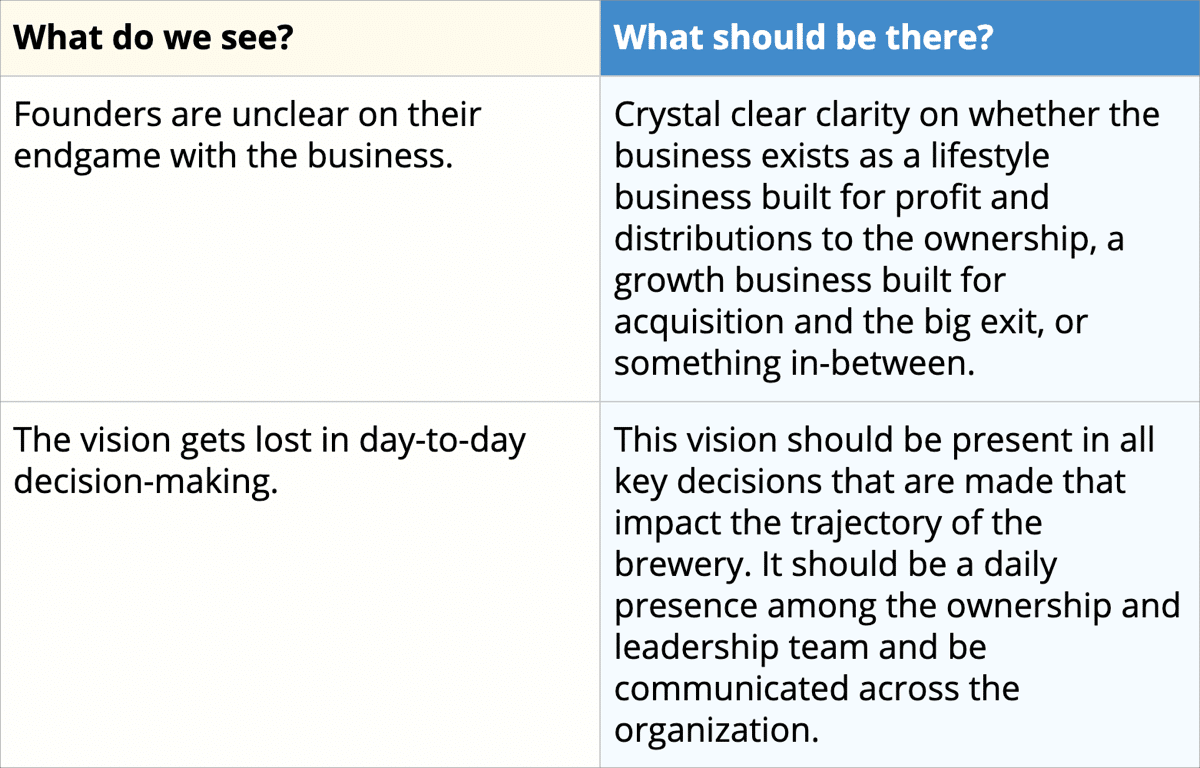
The vision of any business should also be at the forefront. On the owner’s mind and the leadership team’s mind every day.
And with a clear, tangible vision in front of each decision-maker at all times, it becomes much more likely that the brewery moves, inch by inch, in the direction you intended.
What are the implications?
This diagram was part of my NCCBC talk last November:
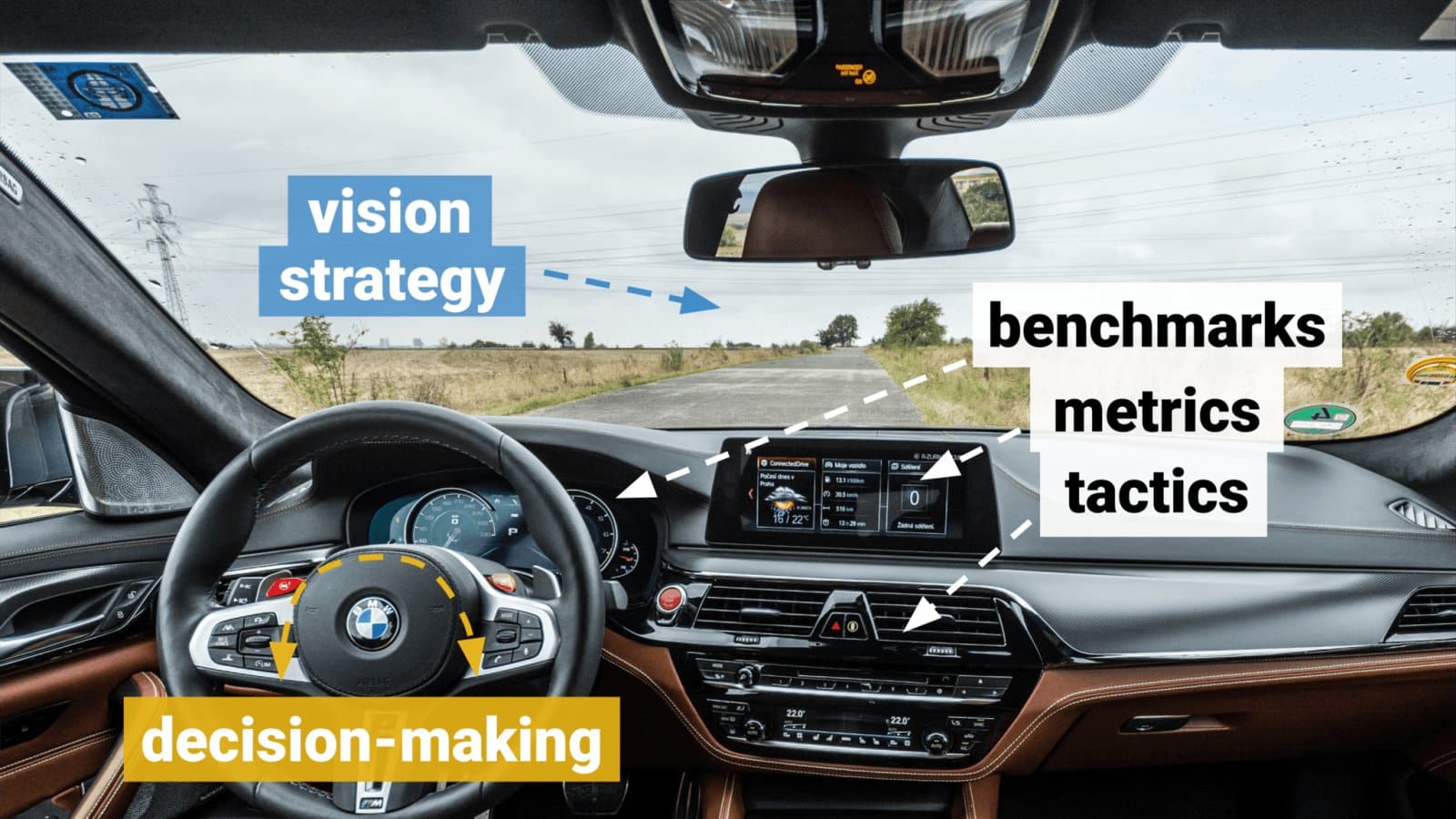
And I used it to make this point:
That without a strong vision, a well-thought-out strategy, and intelligent leadership team decision-making…
The benchmarks, metrics, and tactics aren’t enough.
In fact, they often have the opposite effect and become the crutch, the excuse, or the bandaid that cover up the real barriers that prevent most breweries from reaching their potential.
Yes, the brewery’s vision may change and evolve over time.
You should expect it to.
But even so, the leadership should know where they’re headed and why they’re in the game in the first place.
And like much of what we’ve covered in this series it’s more applicable than ever in an uncertain environment.
Don’t put this off any longer.
The Decider: The Missing Role
In light of the wackiness out there today…
I’d like to bring us back to the good ole’ days.
When instead of Trump-isms, we had Bush-isms.
Which if you don’t recall, were numerous, hilarious, and lighthearted in comparison.
Plus, apparently since “Donnie Q. Trump” came in his approval rating is at an all time high.
The point?
President Bush in all of his glory was right about one thing:
There needs to be a “Decider.”
A singular person that organizes, facilitates, and ultimately has the final say on the tough decisions to align the business with its vision.
This is a deficiency that cuts both ways in the typical brewery.
What do we see?
In most breweries what we come across is one of two scenarios.
Scenario 1: The Co-Founder Committee
One’s the brewmaster. The other is the taproom gal. The third is the operations and finance fella. But the “direction of the business” responsibilities aren’t exactly clear.
In this co-founder duo/trio configuration, the team meets often, but talks in circles on the next move. We don’t have a “Decider,” but instead a consensus-seeking committee.
They revisit the same topics over and over again, and “let it ride” until something external happens and the decision is made for them.
Scenario 2: The Controlling Commander
On the opposite side of the spectrum, we see the command and control approach. The single main owner/operator who, despite hiring a competent leadership team underneath them, keeps a tight grip on every single decision in the business, big or small.
This is The Decider taken too far, and its effects are equally detrimental.
Because when the CEO takes on EVERY decision in the brewery… it means that the most important decisions don’t get the time and attention they require.
What should be there?
What we’d like to see instead is a clear delineation of how decisions are made, which we covered in detail earlier this year.
Who gets a say?
Who drives the decision?
Who owns the final yes/no?
For those breweries who are operating in kumbaya decision-by-committee mode, you need to designate someone as the Integrator (in EOS language). The person that ensures the co-founders and leadership team are coming together on a regular basis to address the key decisions…
And that those key decisions are being made definitively with that clear vision in mind we talked about yesterday, keeping the ship on course towards the final destination.
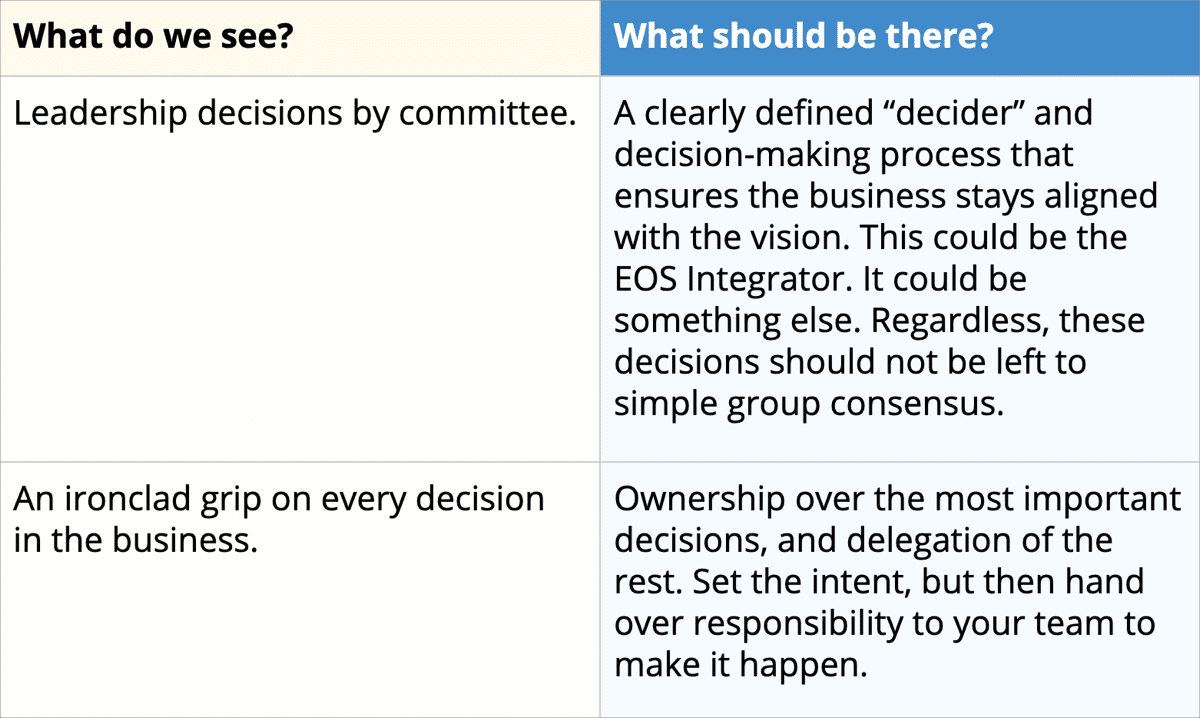
For the tight-gripped command and control breweries, the “Everything Decider” needs to loosen the grip while keeping the key top-level decisions under their purview.
Your approval is not needed on the next glassware purchase.
Give your people clear targets and the leeway and trust to enable them to take full ownership.
And this will then in turn allow the time needed to make those key decisions that drive the organization.
What are the implications?
When key decisions are left to The Committee…
Or when the CEO takes on so many decisions that the most important ones aren’t being addressed with the appropriate level of consideration and focus…
The direction of the brewery ends up delegated to outside forces: voices, opinions, and influences that aren’t aligned with the vision of the founders.
The decisions are being made, alright.
But when we delay, waver, talk in circles…
They just end up being made for us, often in ways we didn’t intend.
This is how the brewery gets off track.
This is how we end up in a place we didn’t intend.
This is how we actually lose control despite the feeling of control we hope to get when we tighten the grip.
So…
What are you going to do about it?
When are you going to take the bull by the horns?
When are you going to decide?
We’re waiting…
Slow Decisions, Slow Progress
Since apparently I am on a Bezos kick lately…
Let’s talk today about another component of his leadership philosophy, which comes directly on the back of our Decider talk:
High-velocity decision making.
You wonder why Amazon is everywhere, all the time?
Yea, this might be why.
They move fast as hell for a behemoth.
And if they can move and shake and pivot like that…
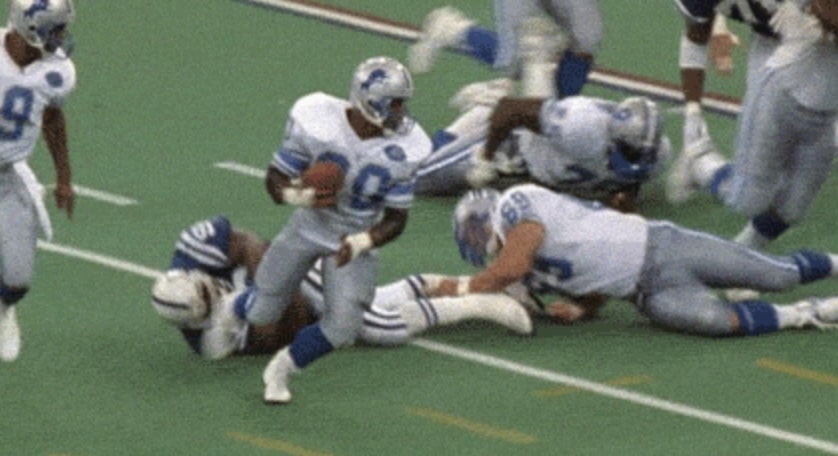
Us small fish certainly can too, right?
What do we see?
As we discussed yesterday, in the typical brewery we see a lot of wheel spinning:
Should we expand distribution or stay at home in the taproom?
Should we finance or cash flow the expansion?
Should we lay off staff or try to ride it out?
Those questions hang out there in the open air… sitting, waiting, unresolved.
Some of this indecisiveness comes from lack of information.
Some of it comes from death by committee.
Some of it comes from lack of clarity.
But information, clarity, and organization will never be perfect, which is where most breweries get hung up.
As a result, we see a lot of “splitting the difference.”
And splitting the difference, particularly in dire circumstances, just won’t cut it.
What should be there?
Instead, leaders need to act as soon as enough information is available to make a judgement call.
Bezos says 70% should be the target. You might use 50% or 80%.
Big decisions require more information. Small decisions require less.
But whatever the threshold, act as soon as you can do so intelligently, and then course correct.
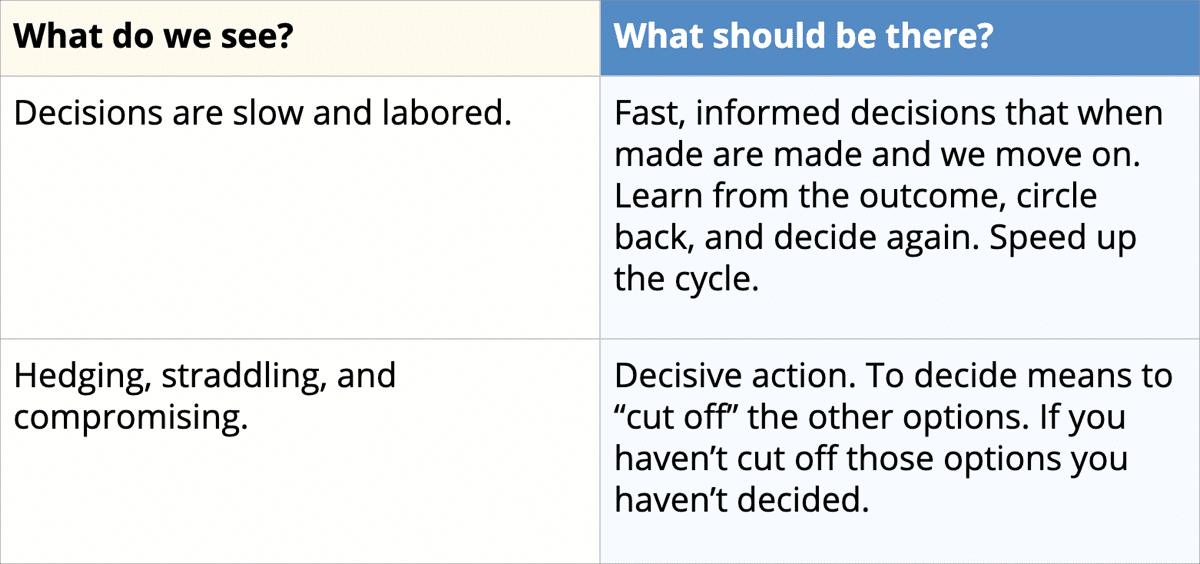
Also, don’t hedge or straddle.
You can’t expand into distribution AND increase margins.
You can’t hire two people for one job.
If there’s disagreement, escalate to The Decider and commit.
Someone will be right, someone will be wrong. Either way a quick answer is better than no answer and half-pregnant progress.
What are the implications?
When the brewery’s leadership gets clear on the vision and who is steering the ship…
When you speed up the pace of decision-making in the brewery…
You speed up progress towards your goals.
Even if those goals, for the time being, involve staying afloat as your governor dicks around with on-again, off-again taproom restrictions.
It means less second guessing, wondering… less “what if”s.
And more focus on the task at hand.
But instead, by slowing the process, either out of fear, uncertainty, or the unwillingness to face the undesirable outcome of a difficult choice…
The typical brewery makes slow progress.
They see the same problems crop up month after month, year after year.
And that means less growth.
Less profit.
Less delicious beer out in the world.
We want more.
And you should too.
Typical Vision and Leadership: Wrapping Up
We are here.
At the end of the line.
Let’s recap and then wrap this series up in a bow.
Summarizing what we see in the typical brewery’s Leadership and Vision:
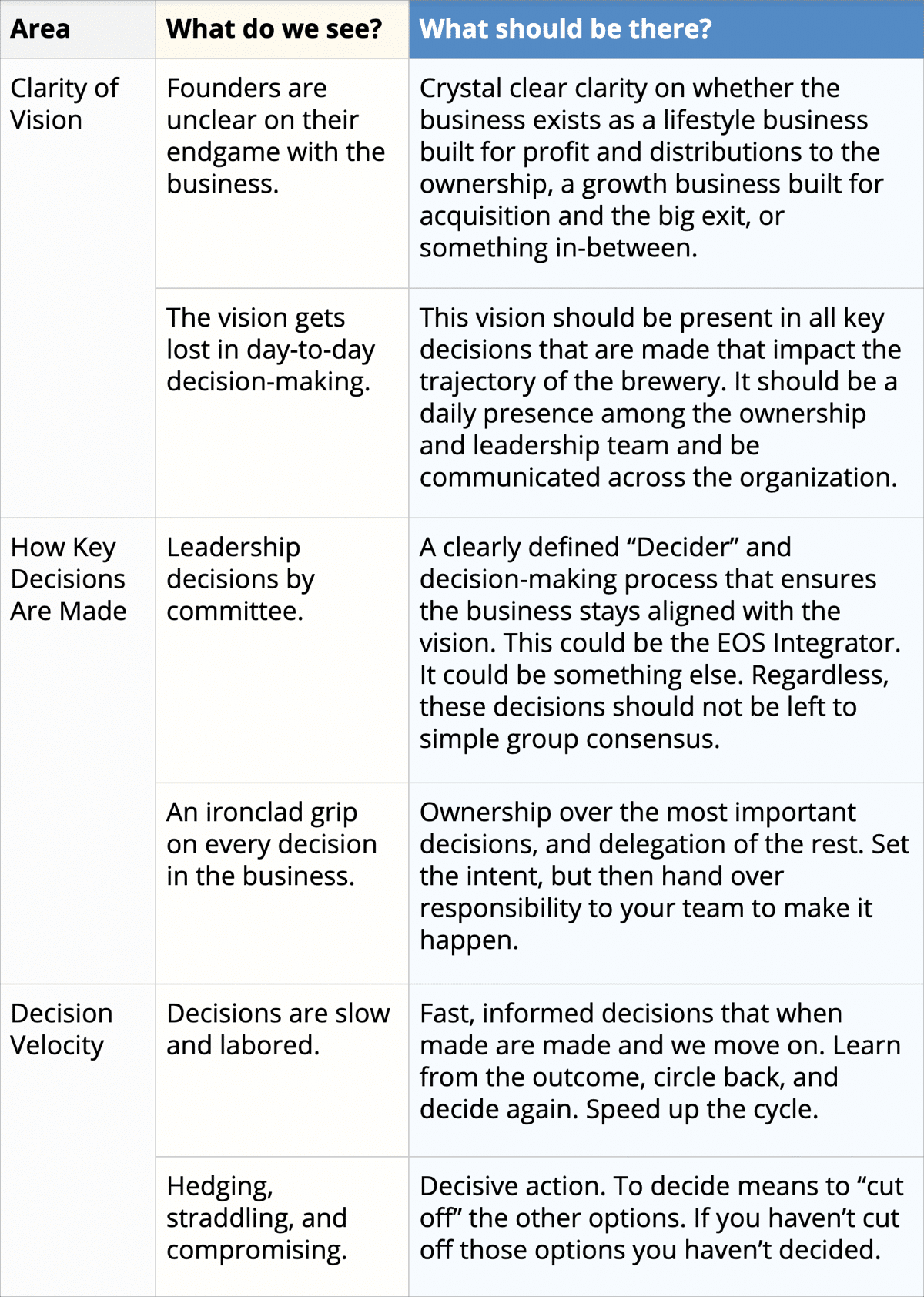
Here’s the rub with everything we’ve covered this last week:
It’s easy to talk about making the hard choices when the hard choices aren’t really that hard.
In good times, when the flow of beer and cash are plentiful…
We can toy with the idea of clarity, focus, and where we’re headed in the future without fully committing.
But in tough times there is no “toying with” or trying it on for size.
That’s where the real battle is fought.
And it requires serious attention to be paid to the decisions that are being made at the highest level…
But the decisions themselves are up to you.
Using “Typical” as A Turning Point
Let’s revisit the questions we asked at the beginning of this series.
Along the way, as we’ve walked through what we see “under the hood” of the typical brewery, we asked you to consider:
Do I see our brewery in these scenarios?
How do we stack up against the “typical” example: positive or negative?
What does that say about who we are, where we are, and where we’re headed?
To perform an internal assessment of how what you’re doing lines up against what most are doing.
Maybe it’s illuminated opportunities to be better.
Maybe it’s given you confidence that you’re on the right path.
Maybe it’s opened a can of worms… with now even more questions that need to be answered.
Whatever the outcome…
First, we hope that this series has brought to light a deeper understanding of what’s going on out there in the typical brewery.
Second, we hope that now, you can use that understanding as a turning point.
An excuse to make the adjustments you need to make.
Permission to change the status quo.
I don’t exactly know what your goals are.
I can guess.
But only you know.
What I can say though is that I know, definitively, what ours are here at Small Batch Standard.
We believe in a better craft brewery.
One that delivers product and service and community to the world.
One that makes art and celebrates experience.
One that generates profit for the founders and investors.
And one that creates opportunity for the wonderful, loyal, dedicated people that it employs.
We know many of those objectives have been challenged this year.
Put through a stress test.
But in our view…
The long view…
It is yet another opportunity to build that stronger, better craft brewery we all want.
There will always be obstacles.
There will always be challenges.
The only question we have to ask ourselves is:
How will we respond?


As a professor of sociology who teaches on the beer industry, and who has been practicing craft beer consultancy for three years, I found this very insightful and vital to my educational growth. Thank you!